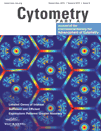
Experiment Overview
| Repository ID: | FR-FCM-ZY6M | Experiment name: | Axenic Cultures FACSVerse | MIFlowCyt score: | 51.50% |
| Primary researcher: | Peter Rubbens | PI/manager: | Nico Boon | Uploaded by: | Peter Rubbens |
| Experiment dates: | 2016-02-17 - 2016-02-18 | Dataset uploaded: | May 2017 | Last updated: | May 2018 |
| Keywords: | [flow cytometry] [microbial communities] [microbiology] | Manuscripts: | [29165907] [31099963] |
|
|
| Organizations: |
Ghent University, Department of Mathematical Modelling, Statistics and Bioinformatics, Ghent, (Belgium)
|
||||
| Purpose: | FCM measurement of twenty bacterial axenic cultures in duplicate. These can be used to create bacterial communities in silico and analyze their properties. Biological replicates of FR-FCM-ZZSH. | ||||
| Conclusion: | Flow cytometry incorporates taxonomic diversity of microbial communities. In silico communities can provide a powerful strategy to employ and develop supervised machine learning methods. In addition, they can also be used to evaluate unsupervised machine learning algorithms. | ||||
| Comments: | Samples have been denoised using a digital gating strategy (following guidelines bye Hammes & Egli (2010) "Cytometric methods for measuring bacteria in water: advantages, pitfalls and applications"). Samples including the string 'HighQ' have been filtered using the automated package flowAI (https://www.bioconductor.org/packages/release/bioc/html/flowAI.html). Default values have been used, target channel is FL1 and changepoint detection penalty has been set to 200. | ||||
| Funding: | Grant sponsor: Ghent University (to P.R.), Grant number: BOFSTA2015000501 Grant sponsor: Ghent University (to R.P.), Grant number: BOFDOC2015000601 Grant sponsor: Belgian Nuclear Research Centre (SCK •CEN) (to R.P.) | ||||
| Quality control: | The performance of the FACSVerse was verified by the FACSuiteTM software performance quality check using CS&T research beads (BD Biosciences). The quality check compares the flow cytometry data of CS&T research beads with the previous recorded bead data. Significant deviations from the bead parameter values at the detector and laser parameters predefined for this specific experiment would cause the quality check to fail. | ||||
